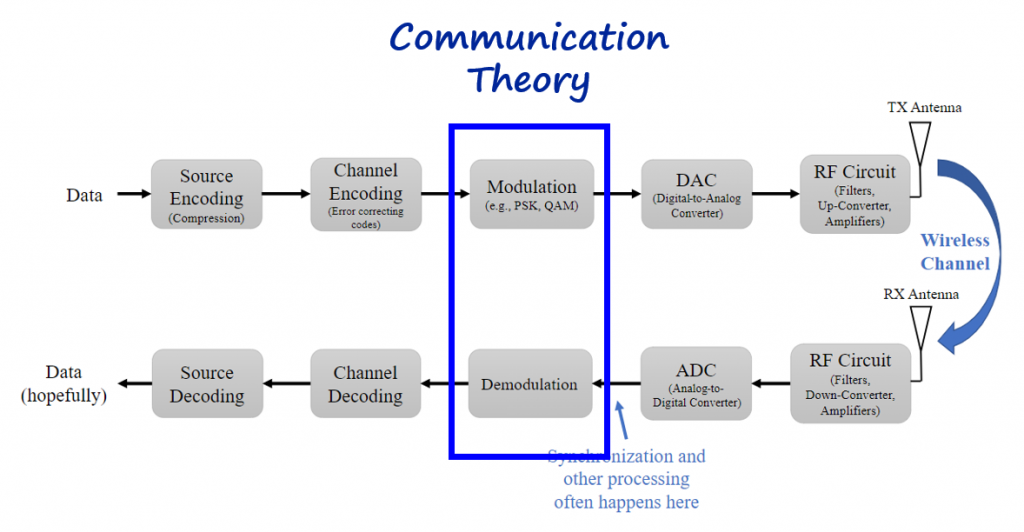
Digital Modulations Intro
Introduction
Digital modulation schemes are not only used to modulate/demodulate information signals that contain digital information, but also used to modulate/demodulate information signals that are analog. There is a chance that you might be wondering "how is that possible?", but this versatility is one of the attractions on using SDRs pretty much everywhere nowadays, the ability to use the same modulation/demodulation schemes for both analog and digital information signals.
When studying digital modulation schemes, and specially if you are new to it, it is easier to get lost with the concepts and how they connect together. To make sure that we don't get lost while diving into this topic, the Tx-Rx Chain block diagram below can potentially assist us with that task. For example, for the concepts covered in this set of articles about digital modulations, we are focusing our attention to the Modulation and Demodulation blocks.

All the digital modulations schemes covered in the "Digital Data to Analog Signal" topic, are assuming that the data is already in a digital format. This digital data might not be the original zeros and ones of your information signal because the Source Encoding block and Channel Encoding block might have altered the contents according to a certain requirement or goal.
The reason why I am bringing this up is because the information signal (or data) used in some of the examples might not make sense at first. It is important to understand that the zeros and ones on the examples are representation of data that could have been processed before. However, to understand what is happening inside the Modulation and Demodulation blocks, the content of the data is, for the most part, not that relevant.